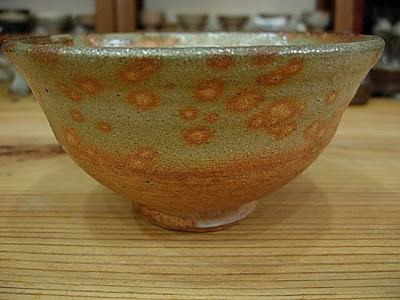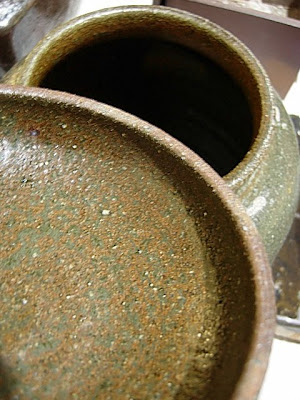
This is one of those mystery teas that tea lovers so appreciate. Some obscure, small scale production. No glits, nor glamor. No fancy packaging (which is pretty much a must in Korea). This tea simply came in an common tube, inside the tube a simple foil pack. Completely writing on either- no indications on the packaging as to what when it was picked and produced or who produced it. There is something about these teas that makes drinking it more intimate. Knowing that is was probably make perhaps with more care than say, a large production tea.

Considering the current tea market in Korea as discussed in a post a few days ago, one is thankful to have a try at some of this small production stuff. The friend who sent the tea simply referred to it as “2009 Jiri Mountain Yellow Tea”.
Its small, wiry, jet black leaves smell of rich deep pungent cherry. They fill much of the pot until warm water is added.

The first infusion pours a clear bold yellow. The taste is very juicy, salivatingly sweet with buttery, peppery, and spicy notes that follow. The mouth is left feeling very slippery and full of saliva. Upon first sip it is apparent that this tea is light and uplifting, nice cheer on this cloudy, rainy fall afternoon. The light body of this tea and bright yellow soup suggest less oxidization during production.
As the next few infusions pass on by, the mouth feel becomes more satisfying as it fills out a bit more but still largely remains slippery, juicy- a touch incomplete. Delicious, soft, sour vegital notes arrive within a deep interesting pool of light, juicy, sweet, spicy flavour. Even chocolate notes sometimes make a brief appearance in the complexity of these early infusions. One suspects possible, old, wild growth from the strong, pure qi that relaxes as well as alerts.

This tea is quite flavourful and is a good example of a tea containing the six flavours of Korean tea- sour, sweet, bitter, spicy, bland, and salty. It noticeably has all these in varying proportions.
Although the complex depth of this tea creeps away after the first few infusions, the mouthfeel and aftertaste pick up a bit of the slack. A balance of juicy sweet and sour notes hold on and finish in the mouth with a light dry sensation.
This fun yellow tea is stretched until mainly dry, woody, citrus, earthy tones are all that is left to savor. Even further along, the citrus and dryness drop off.
One drinks this tea in this way as it glows throughout- gently energizing ones soul.

Peace




































